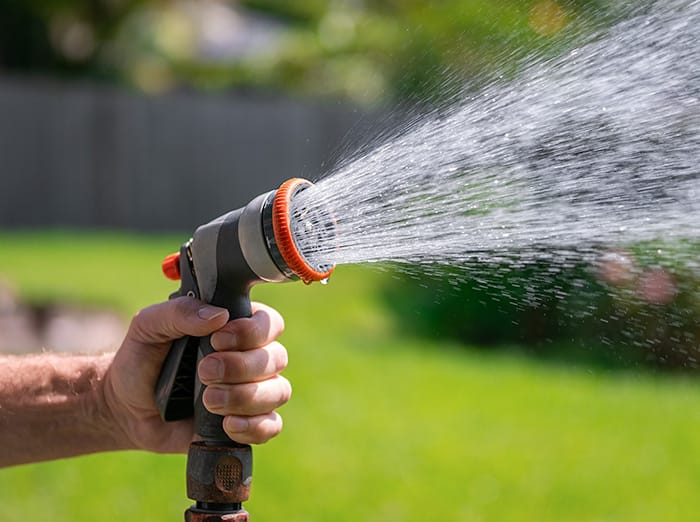The timing and reasons for watering your lawn
Some homeowners work harder than they must in order to have a great-looking lawn. The grass is fairly strong; if you provide the right growing conditions, your lawn will protect itself from most weeds and diseases. One of the major mistakes people make about watering is understanding when, why, and how to water their lawn. To help your lawn be strong and healthy, consider these factors and follow these watering tips.

Water with purpose!
The goal is to water 3”-6” deep. Long, less frequent watering is more beneficial than short, frequent watering.
DO…
- Water slowly, thoroughly, infrequently.
- Water every 3-4 days during the warm season.
- Finish watering early in the morning (before Sunrise).
- Check for wilting around mid-day.
- Set sprinkler water spray close to the ground, not in high arcs.
- Aerate your lawn.
- Use a watering timer.
- Soak the area for 30 minutes to 1 hour.
DON’T…
- Water during the heat of the day (you lose 1/3 of the water to evaporation).
- Over-water, you will lose nutrients, encourage rot and disease, and attract mosquitoes.
- Water too frequently, as it encourages shallow roots and weak grass.
CONSIDER…
- More water is needed under trees because they take a lot of moisture out of the soil.
- Slopes in the lawn allow water to run off and not soak in.
- Weather- Heat/Cool, humidity, wind, drought? How much and often has it rained? (a rain gauge is helpful)
- Mulch Depth- The deeper the landscape mulch usually equals higher water retention.
- Soil type and condition: Adjust watering accordingly.
- Clay soils (commonly found in our area) are hard to penetrate.
- Sandy soils don’t hold water well and drain quickly through the soil.
- Loam soils soak and move water deep.
- Compacted soils shed water and need aeration to remedy.
NOTE: Natural rainfall alone is not enough water for your lawn. Why?
- It doesn’t distribute evenly enough throughout the entire lawn.
- It doesn’t always provide an adequate amount.
- It isn’t always consistent and reliable.
Your lawn needs at least 1 ½ inches of water per week during the very hot months.
How much am I watering?
To calculate how much water your lawn is actually receiving, put several containers with straight sides on the ground around the yard while you’re watering (a coffee mug, metal can, or plastic container). Then use a ruler to measure the depth of the water in the container. You may be surprised at how long it takes to collect that much water. After collecting 1 to 1 ½ inches of water, move hose-fed sprinklers.
If you can see your footprints on the lawn, your grass is dehydrated, it’s time to water!

Testimonials



News, Blogs & Articles
Our Blog













